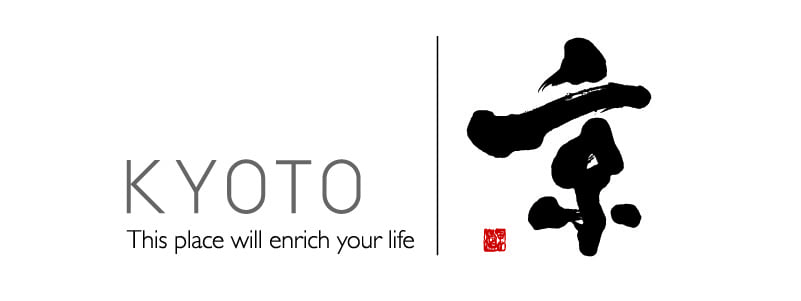Term archive

投稿タイプ:column
9 Tranquil Onsen in Kyoto That Deliver Ultimate Relaxation

投稿タイプ:column
Secret Sakura: Eight lesser-known spots for viewing cherry blossoms in Kyoto

投稿タイプ:column
Hidden Foodie Delights – 8 Kyoto Cafes & Restaurants Off the Beaten Path

投稿タイプ:column
8 Spectacular and Secluded Spots to see Autumn Leaves in Kyoto
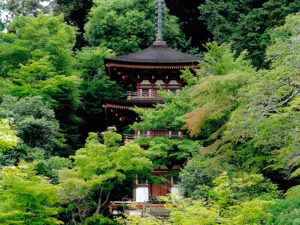
投稿タイプ:events
Minami Yamashiro Old Temple Pilgrimage tour
We hold ‘Minami-Yamashiro Old Temple Tour’ jointly with this Special Exhibition Celebrating the Completion of Repairs to Jōruriji’s National Treasure Amida Statues Numinous Minamiyamashiro ~Treasures from the Mountains between Nara and Kyoto~ in Nara National Museum.
In this tour, we travel around old temples in Minami-Yamashiro area.
How about experiencing the history and the culture in Minami-Yamashiro area which links Kyoto and Nara?
In old temples, we can also see the special exhibition.

投稿タイプ:column
The Terroir of Kyoto on a Plate: Seven Great Local Eateries
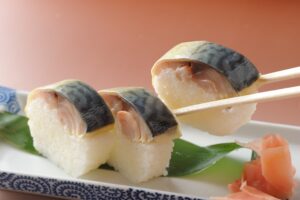
投稿タイプ:restaurants
Asahi-ya Makerel Sushi
This friendly, old-fashioned Japanese restaurant specializes in traditional saba-sushi (mackerel sushi), and can be foudn just in front of Iwashimizu-hachimangu Station on the Keihan Line. Located at the foot of Ishimizu Hachimangu, a National Treasure, Asahi-ya has been in business for over 100 years.
The restaurant serves its specialty, mackerel bouzushi (""stick"" sushi) using carefully selected top-quality mackerel from northeastern Japan, rice and vegetables from Yawata, and other fresh seafood ingredients. Take-out is also available.
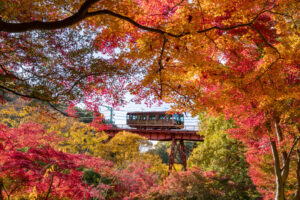
投稿タイプ:sightseeing
Iwashimizu-hachimangu-sando-cable
Take a delightful ride on this cable car that connects Cable-hachimangu-guchi Station (at the foot of Mt. Otokoyama) to Cable-hachimangu-sanjo Station (up on the mountain). It takes about 3 minutes to reach the summit area where the main building complex of the Iwashimizu Hachimangu shrine awaits.
The height of the bridge in the middle is about 43 meters, making it the highest cable car bridge in Japan.
The passing landscape seen from the window is superb. Around the fall season, vibrant colors of fall foliage add to the spectacle.
At Cable-hachimangu-sanjo Station, commemorate your ride with a special stamp. Also, from the top of the mountain, enjoy the scenery unique to this location. You can see the Kizu River, Uji River, Katsura River, Mt. Tennozan, Mt. Hiei, the mountains in Uji, and so on.
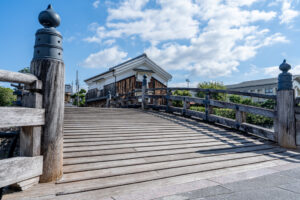
投稿タイプ:sightseeing
Ango Bridge
Ango Bridge stands at the foot of Mt. Otokoyama, spanning the Hojo River. Originally a flat bridge, it was rebuilt in this arched style after a fire in 1868. Its semicircular structure resembles the arched shape of taiko (a Japanese drum), and it’s also called "Taiko-Bashi". The view of a hazy moon and Ango Bridge is included in the famous eight picturesque views of Yawata.
Both banks of the Hojo River are lined with walking paths. This area and the Iwashimizu Hachimangu shrine serve not only as a relaxing spot for local residents but also as a charming destination for tourists.
In an annual festival of the Iwashimizu Hachimangu shrine, Iwashimizu Festival, Hojo Ritual (a life-releasing ritual) is performed at Ango Bridge.
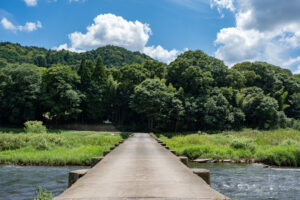
投稿タイプ:sightseeing
Koiji Bridge
Kizu River runs east to west through the center of Minamiyamashiro Village. There are three bridges over the river in this village, and Koiji Bridge is one of them. It’s officially called Okawara Bridge.
They say that if you walk across Koiji Bridge to Koishidani Shrine, your wish is more likely to come true. Koishidani Shrine is believed to have a power to grant wishes for love, childbirth, safe delivery and so on.
Koiji Bridge is designed to sink beneath the river when the water level rises after heavy rain. Without railings, the bridge prevents itself from being swept away or destroyed when it gets submerged. Confronted with rough waves, it doesn't resist but quietly hides and just waits for the crisis to pass. That's why it has endured for a long time. That might sound like the secret of a happy relationship with a partner.
The bridge is wide and sturdy, and cars can pass on it. It’s located close to Okawara Station on the JR Kansai Line.
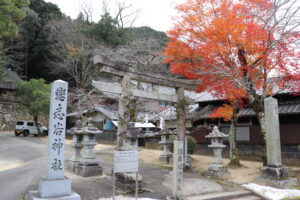
投稿タイプ:sightseeing
Koishidani Shrine
Koishidani Shrine is dedicated to Koishidanihime, who is said to have been a sobame (spouse who is not the primary wife) of Emperor Go-Daigo. The shrine is believed to have a power to grant wishes for love, childbirth, safe delivery, and so on. Some young women come from afar to pray at the shrine for a successful romantic relationship.
They say that if you walk across Koiji Bridge to the shrine, your wish is more likely to come true. After crossing the bridge over Kizu River and ascending a slope, you'll come across a torii (traditional Japanese gate most commonly found at a shrine). Pass through it and walk forward, and you'll find stone stairs. When you reach the top of the stairs, you’ll see Tenmangu Shrine on the right, and Koishidani Shrine on the left.
In front of the main sanctuary of Koishidani Shrine, you can find heart-shaped stones. In the old days, people would go to the river, pick up flat stones, wash them, and offer them to the deity of the shrine. Some of the stones are naturally heart-shaped. (Do not bring them home.) There is also a large heart-shaped stone buried in the shrine. If you visit, be sure to look for it.
And what is interesting is that you can get this shrine's amulets only on 3 days of the year: April 2nd and September 2nd (annual festival days), and October 21st (the annual festival day of Tenmangu Shrine). (Perhaps, you might get them on other days as well, if you are lucky enough to find someone at the shrine office.)
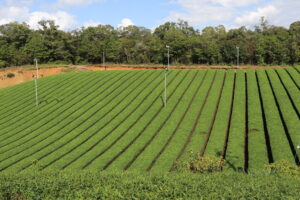
投稿タイプ:sightseeing
Tayama Tsurugi Tea Plantation
Minamiyamashiro Village is Kyoto's only village. It’s renowned for its beautiful scenery and as one of the major production areas of Uji tea. Approximately 80% of the village is mountainous, with elevations ranging from 300 to 600 meters. This unique topography led to the development of the slopes for tea cultivation.
The Tayama Tsurugi Tea Plantation extends over a large area. Recognized as a part of the Japan Heritage, it presents a culturally significant landscape.
A distinctive feature of this plantation is its tate-une (vertical ridges) that create the impression of tea rows soaring up into the sky. The beautifully aligned ridges form the wonderful landscape like a huge work of art. Actually, this design serves a practical purpose: it allows for efficient tea leaf harvesting using powered clippers or riding-type tea leaf pickers. It also facilitates airflow from the fans installed throughout the plantation to protect the tea leaves from frost damage.
This characteristic landscape offers a glimpse into the interplay between the history of modern Uji tea production, and this area's unique environment and cultivation practices.
As a side note, the village has several cycling routes. Enjoy the village's landscapes and natural scenery. Tayama Tsurugi Tea Plantation is located near Takayama Dam. (The tea plantations are private property. Please do not enter them.)
